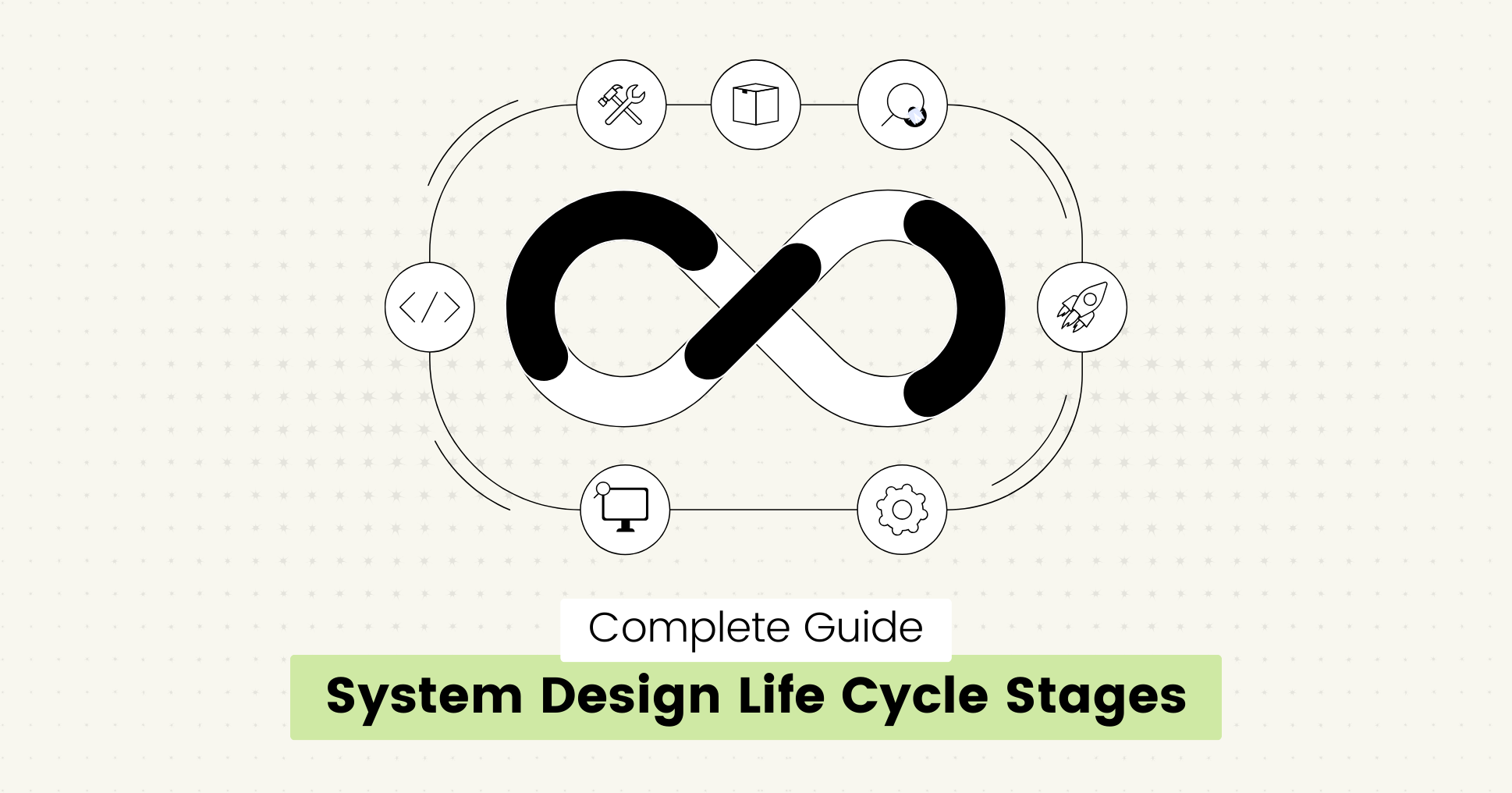Building quality software is a complex process in which developers take an idea and turn it into a functional product.
The SDLC is a multi-step process that helps developers turn their ideas into working systems.
It is a structured approach to designing and implementing a system to meet end-users needs.
In this guide, you will learn about the system design life cycle stages and how to implement them to create a successful system.
What is the System Design Life Cycle?
System design life cycle (SDLC) is a step-by-step methodology used in software development to design, test, and maintain complex systems.
It focuses on activities in creating a system architecture and defining its detailed design specifications to ensure that the system effectively meets its intended purpose and functions.
It is a subset of the System Development Life Cycle, which covers the entire software development process from conception to reality.
Importance of SDLC
SDLC provides a structured framework for developing any new system, software application, or technology.
It makes it easy to meet the challenging requirements and technology upgrades throughout the software development life cycle.
Here are some key benefits of SDLC:
- A clear idea of what the system is supposed to do
- Structured approach to improve the overall efficiency of the development process.
- Improved risk management to reduce costly errors and project delays.
- Alignment of development efforts with the needs and expectations of product users and stakeholders.
- Emphasis on quality assurance to deliver reliable and high-quality software.
- Optimal resource utilization to deliver projects within budget.
- Feedback and flexibility to refine the system over time.
7 Stages of the System Design Life Cycle
This process consists of several stages, each crucial in creating a successful and sustainable system.
Here's an overview of each phase of SDLC to help you plan, design, and build quality software.
Planning
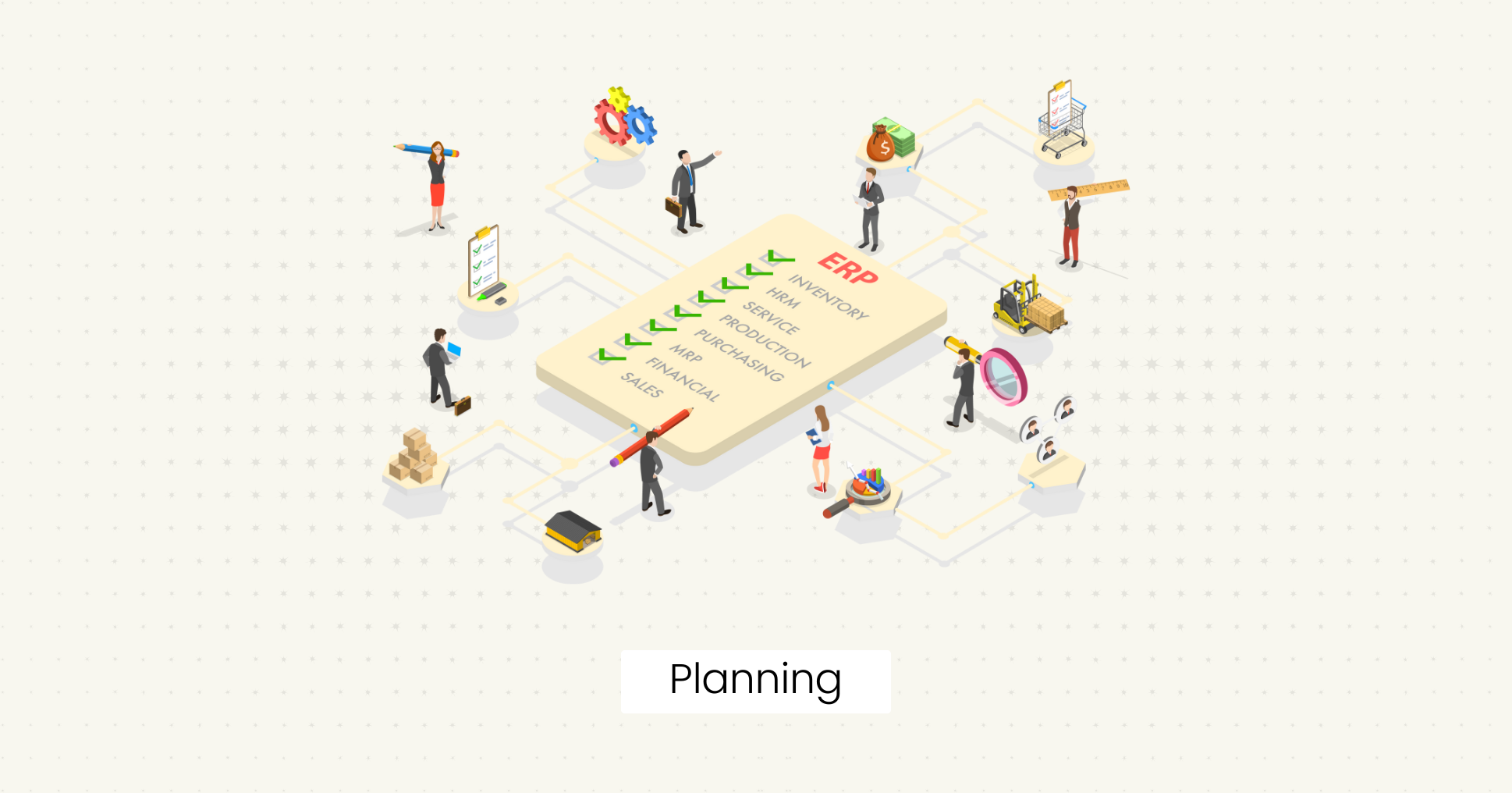 The first stage of SDLC is planning, where the project goals, requirements, and system constraints are identified.
The first stage of SDLC is planning, where the project goals, requirements, and system constraints are identified.
The planning stage determines the feasibility of the project and outlines the following:
- Project scope and objectives
- Time management
- Resource allocation and limitations
- Potential risks
- Recommended solutions
Requirements Analysis
 In the analysis phase, the functional and non-functional requirements of the system are defined.
In the analysis phase, the functional and non-functional requirements of the system are defined.
It involves gathering requirements from developers and clients and analyzing the system's needs and limits to create a software requirement specification (SRS) document.
The SRS document helps to prioritize requirements based on their importance and feasibility.
It provides a clear guide on how you can optimize your system requirements and attributes to meet the client's expectations, such as:
- System performance
- Scalability
- Maintenance
- Security
- Usability
- Design constraints
System Design
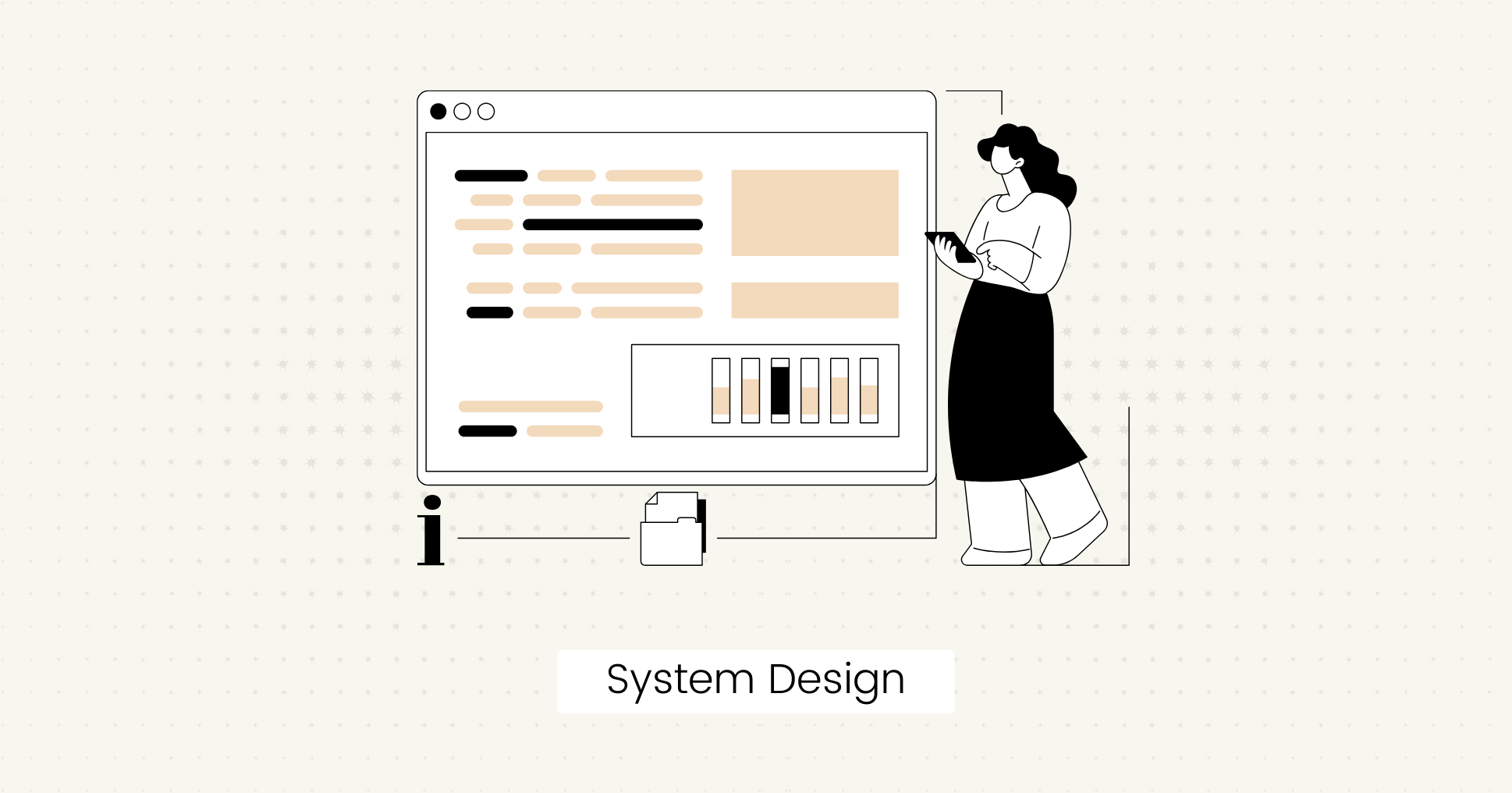 The design stage is where you create the system architecture and components.
The design stage is where you create the system architecture and components.
It is an important step of the SDLC process because it acts as a bridge between requirements analysis and the actual development of the system.
A clear and detailed design ensures consistency and coherence throughout the interface.
Developers identify the best solutions to create the software based on user requirements and functional specifications.
This stage includes the following tasks:
- Define the overall structure of the system.
- Specify different components.
- Design user interfaces, modules, and data flow.
- Create a detailed software design document including High-level Design (HLD) and Low-level design (LLD)
Proper system design is essential to meet functional, performance, and usability requirements.
Development
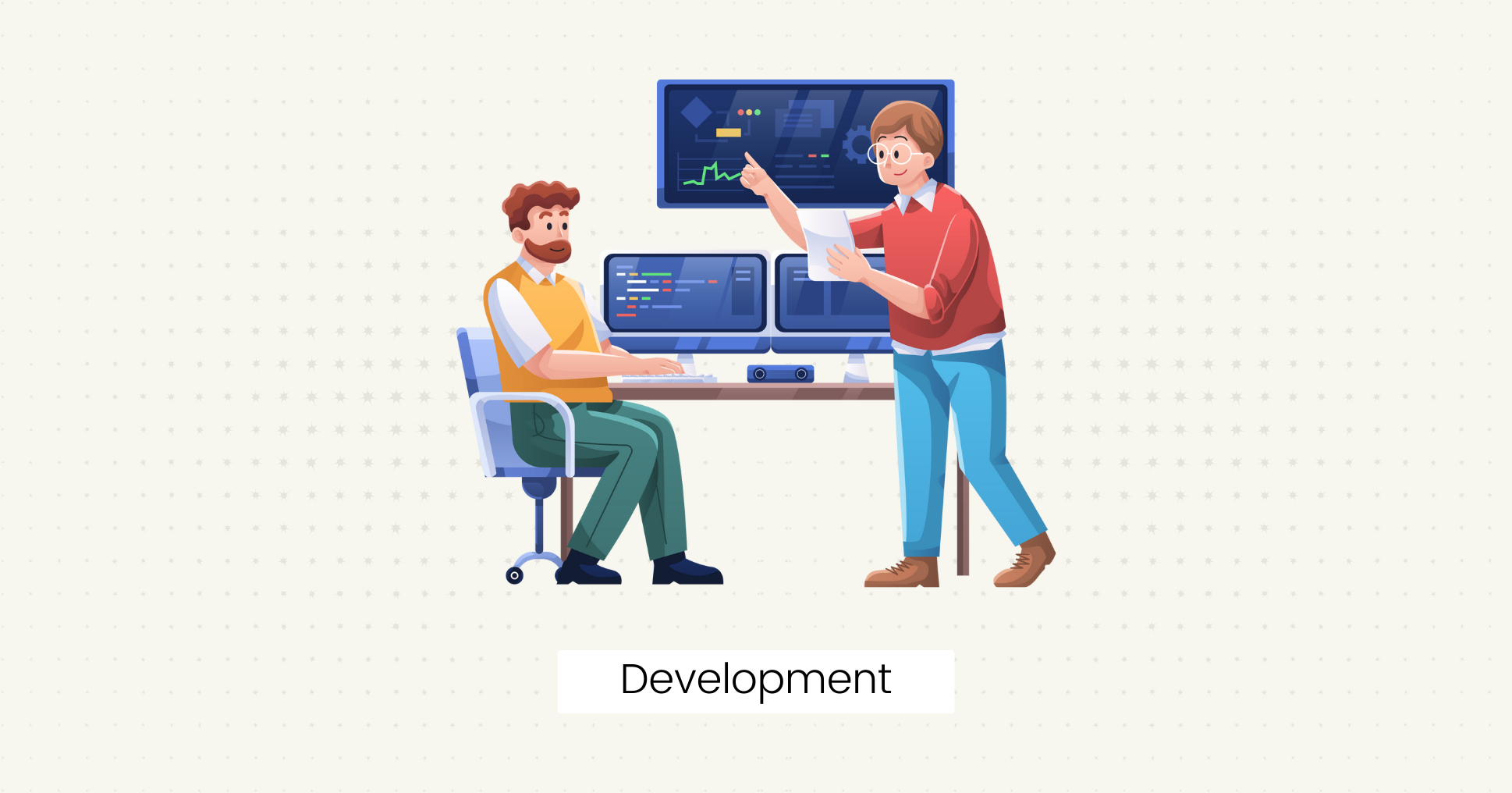 The system is built in the development stage according to requirements analysis and design specifications.
The system is built in the development stage according to requirements analysis and design specifications.
In this stage, developers perform important tasks like:
- Write the code.
- Develop databases and integrate components.
- Perform unit testing to ensure that each component functions correctly.
- Follow coding standards and best practices.
Testing
 The testing stage often runs parallel to the development of the system to ensure it meets the specified requirements and functions properly.
The testing stage often runs parallel to the development of the system to ensure it meets the specified requirements and functions properly.
Developers combine manual and automated testing to detect bugs or errors in the development process.
Different tests performed in this stage include:
- Performance testing: Tests the system's response time and scalability under different conditions and workloads.
- Functional and Regression testing: Verifies that the system meets its functional requirements and that recent changes do not affect its functionality.
- Integration testing: To test the interactions between different components.
- Security testing: Identifies security threats and vulnerabilities.
- UI testing: Test the functionality of the user interface to confirm that it is intuitive, easy to use, and meets the needs of end users.
Testing validates system functionality and verifies that the system meets the desired quality standards before deployment.
Tip: You can use Lost Pixel to automatically test your interface and catch visual bugs with UI regression testing in minutes.
Deployment
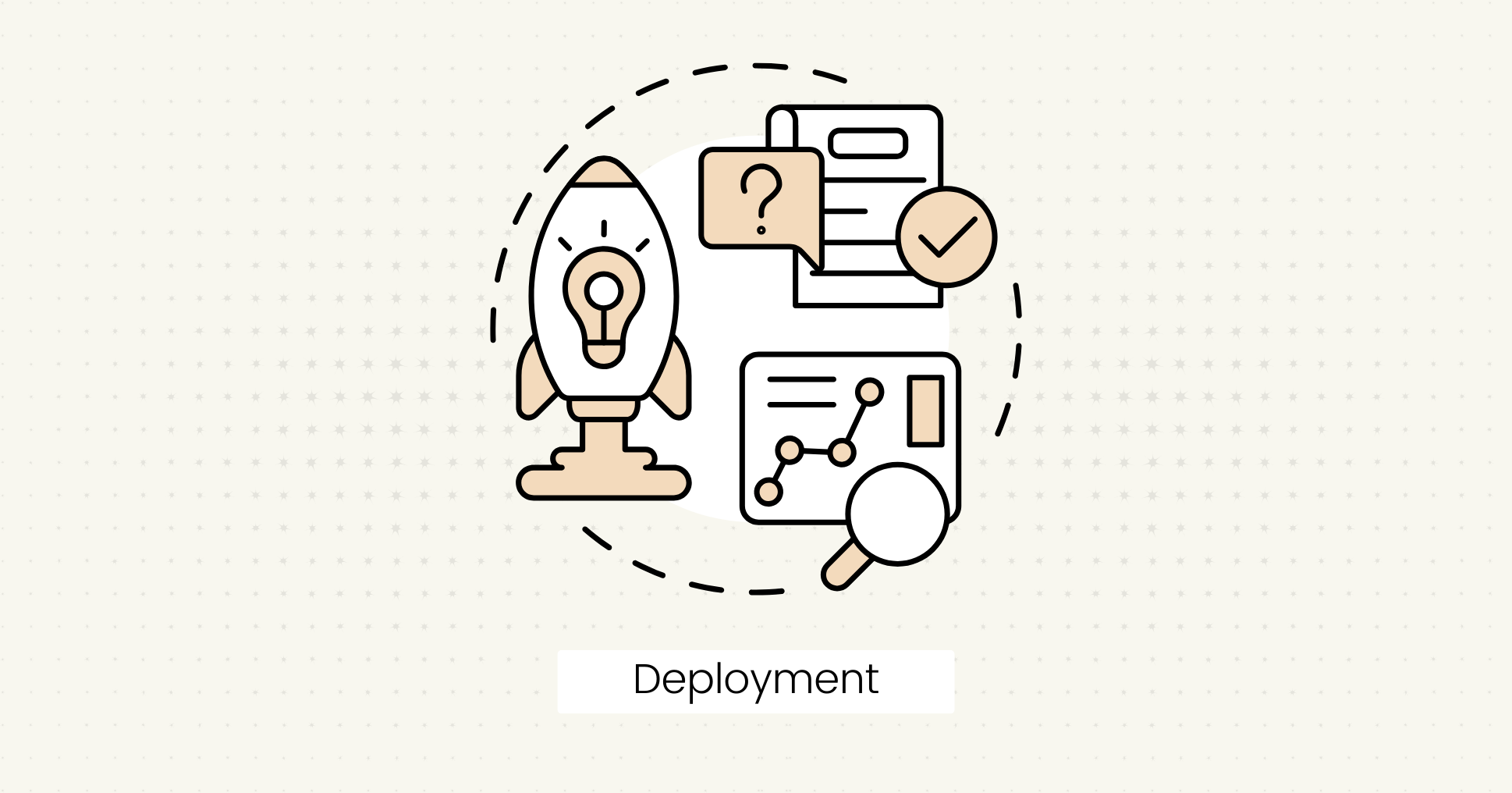 During the deployment stage, the system is deployed into the production environment.
During the deployment stage, the system is deployed into the production environment.
This stage includes tasks to plan and execute the deployment process, such as:
- Installation and configuration
- Data migration
- User training
Maintenance
 Finally, the released software is monitored, maintained, and upgraded to meet user needs and address issues.
Finally, the released software is monitored, maintained, and upgraded to meet user needs and address issues.
It involves tasks like:
- Monitor overall performance.
- Address user feedback.
- Implement changes and updates.
- Perform routine maintenance tasks.
- Maintenance releases and bug fixes.
Ongoing maintenance and support activities confirm that the system continues to operate efficiently and provide a positive user experience.
What are the Common Models Used in System Design?
Several models are used in SDLC to guide the development process and help manage resources effectively.
Some popular models are listed below:
- Waterfall Model: It follows a sequential pattern where each phase is completed one after the other and depends upon the outcome of the previous stages, making it suitable for projects with stable requirements.
- Iterative Model: It involves multiple cycles incorporating feedback, making it suitable for projects where requirements may change.
- Incremental Model: The system is divided into small, manageable modules that are developed and delivered incrementally over time.
- Spiral Model: It combines the waterfall and iterative approaches, emphasizing risk management and iteration. It involves prototyping, risk analysis, development, and testing.
- Agile Model: A flexible and iterative model that emphasizes collaboration, customer feedback, and adaptive planning. Best for projects with fast-changing environments.
- DevOps Model: Automates system deployment, testing, and maintenance to achieve faster time-to-market and higher software quality.
Tips and Best Practices for SDLC
Some key tips and best practices to follow throughout the SDLC are:
- Get a clear understanding of the requirements and their alignment with business goals.
- Use automation tools to save time and effort.
- Create reusable components for easier maintenance and scalability.
- Design the system to be flexible to accommodate changing requirements.
- Follow design principles like DRY (Don't Repeat Yourself) and KISS (Keep It Simple, Stupid) for code readability.
- Conduct UI design review for enhanced UX experience.
- Properly document the entire process for future reference.
Final Words
SDLC is a productive approach to designing your desired software products.
Analyze key requirements, choose the right tools, and follow best practices to build a solid foundation for your next development project.
By following a proper methodology in the SDLC, you can improve the quality and reliability of your system, ultimately leading to greater customer satisfaction.
FAQs
How to integrate security into the SDLC?
Integrate security into the SDLC by implementing secure coding practices and security testing throughout all stages of development.
Can a beginner implement SDLC?
Beginners can implement SDLC by following structured methodologies, learning from tutorials, and seeking guidance from industry experts.

About Dima Ivashchuk
Hey, I'm - Dima the co-founder of Lost Pixel. I like modern frontends, building stuff on the internet, and educating others. I am committed to building the best open-source visual regression testing platform!
